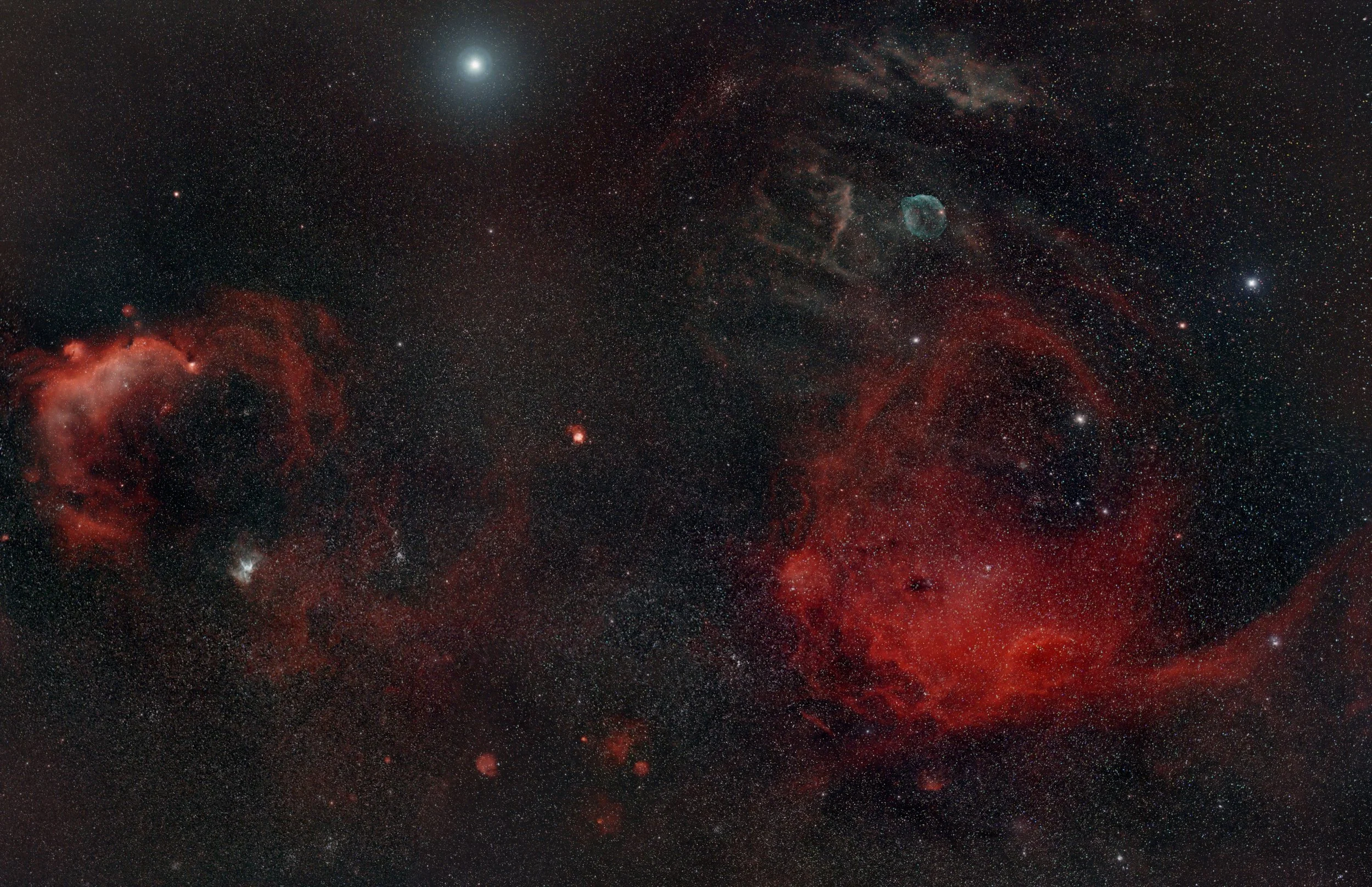
AAPOD2 Image Archives
The Sun after its maximum
This captivating mosaic of the Sun, composed of five meticulously aligned panels, offers a glimpse of our star as it begins to settle into a quieter phase following its solar maximum. The intricate textures of the solar surface, including active regions, sunspots, and swirling plasma, are captured in extraordinary detail. The dynamic chromosphere reflects the Sun’s immense power, even as it transitions to a more subdued state in its 11-year solar cycle.
What better way to celebrate the start of a New Year than by looking at the cosmic powerhouse that sustains life on Earth? Just as the Sun begins its gradual decline in activity, the arrival of January invites us to reflect on cycles of change and renewal in our own lives.
Sirius and surrounding
Spanning the expansive canvas of the night sky, this wide-field image captures the grandeur of the Canis Major constellation in all its celestial splendor. From the dazzling brilliance of Sirius, the brightest star in the night sky, to the intricate beauty of the Dolphin Head nebula, Thor's Helmet, and the Seagull Nebula, the scene is a breathtaking tapestry of cosmic wonders.
In this sweeping panorama, the celestial landscape unfolds with an array of celestial objects, each telling its own story of stellar evolution and cosmic phenomena. Against the backdrop of the cosmos, the constellation of Canis Major reveals its treasures, inviting observers to gaze upon the vastness of space and marvel at the mysteries that lie beyond.
Cheshire Cat (gravitational lens)
The Cheshire Cat Gravitational Lens is a result of a cosmic dance between massive objects, where the gravitational pull of a foreground galaxy acts as a cosmic magnifying glass, bending and distorting the light from a more distant galaxy located behind it. This gravitational lensing phenomenon creates a captivating optical illusion reminiscent of the elusive grin of the Cheshire Cat.
The Cheshire Cat Gravitational Lens introduces observers to the concept of gravitational lensing—a gravitational phenomenon predicted by Einstein's theory of general relativity. This celestial cat's grin serves as a visual reminder of the profound influence of gravity on the paths that light takes through the vast expanse of space.
The Crescent nebula and its central star WR136
Wolf-Rayet stars are evolved, massive stars that have shed their outer layers, revealing a hot and dense core. WR 136 is no exception, displaying strong stellar winds that propel material into space. These winds create a nebula around the star, contributing to the surrounding interstellar environment.
The binary nature of WR 136 adds another layer of interest. The companion star, which is not a Wolf-Rayet star, orbits the primary star, influencing its evolution and contributing to the dynamics of the system.
Partial solar Eclipse of the Sun
In that great journey of the stars through space, about the mighty, all-directing Sun, the pallid, faithful Moon, has been the one companion of the Earth.
A Solar Eclipse: Ella Wheeler Wilcox - 1850-1919






